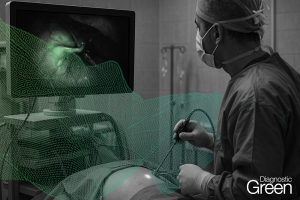Background: Historically, lymphovenous bypass (LVB) is reserved for patients with early-stage lymphedema owing to the difficulty in identifying functional lymphatic vessels using indocyanine green (ICG) lymphography in patients with advanced lymphedema. Although ultrasound is useful in these patients, ultrasound mapping of the entire limb can be technically demanding and time-consuming. This study presents the use of ICG lymphography and ultrasound to identify functional lymphatics in patients with advanced-stage lymphedema.
Methods: The “milestone sign” is defined as a high-intensity area that diminishes with the application of pressure during ICG lymphography. The “swirl sign” is defined as the appearance of a round, low-echo area rotating along a vessel on ultrasonography. Incisions were made when both signs were present in regions where no linear pattern could be seen. We performed retrospective review of patients who were treated using the milestone-swirl approach. Patient characteristics and perioperative data were analyzed.
Results: Among the 19 patients, 47.4% had late ISL stage 2 lymphedema, followed by 26.3% with early ISL stage 2% and 26.3% with ISL stage 3 lymphedema. We identified functional lymphatic vessels in all 19 patients using the milestone-swirl sign approach. The average diameter of the lymphatic vessel was 0.78 mm and 89.4% patients demonstrated signs of ectasia.
Conclusion: Our study shows that the milestone-swirl approach is an effective tool in identifying functional lymphatic vessels in patients with advanced-stage lymphedema. By employing this approach, we believe that we can expand the indications for LVB beyond patients with early-stage lymphedema.




